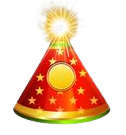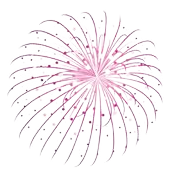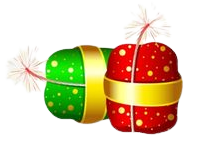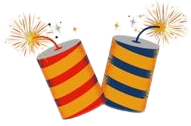The utilization of fireworks in the festival of Diwali, which is so normal in India presently, probably appear after around 1400 AD when explosives came to be utilized in Indian fighting. Black powder, the essential fixing in fireworks, has a long history in India. Explosive was a coincidental 10th or 11th century development of archaic Chinese chemists. The black powder innovation and the pyrotechnical diversion blends tracked down their direction from China to India through the Middle Easterners.
Praising with fireworks, misty watercolour and gold on paper; Late Mughal, Muhammad Shah period; or Oudh; Second quarter of the eighteenth century. It is conceivable that Chinese pyrotechnic equations were brought to India around 1400 AD and changed by fixings that were accessible in India.
Records of fireworks are being utilized in 1518 in weddings in Gujarat, and in 1609 when Ibrahim Adil Shah, the Ruler of Bijapur spent Rs 80,000 on fireworks alone.
After a prohibition on firecrackers was forced for this present year too around Diwali, many considered it to be an assault on Hinduism, and all the more essentially, it was viewed as an encroachment of the option to consume firecrackers on the greatest Hindu celebration, professing to be an indispensable piece of festivities.
Hinduism is accepted to be the world’s most seasoned religion, as per a few researchers, with roots and customs going back over 4,000 years. The celebration of lights, nonetheless, traces all the way back to more than 2,500 years. This is a lot of before the Chinese designed black powder, and firecrackers advanced into India in the thirteenth century.
Indeed, even years and years after the fact, fireworks were simply restricted to eminence and turned into an indication of success and magnificence during the Mughal period. Fireworks were normal during weddings and crowning rituals.
Marriage parade of the Mughal Ruler Dara Shikoh the oldest child of Shahjahan. Dara Shikoh is seen riding an earthy coloured steed in the focal point of the canvas. The lady of the hour’s side is seen getting the marriage parade with magnificent firework show.
It is accepted that the utilization of firecrackers didn’t almost certainly begin before the eighteenth century. It was the point at which the Maratha rulers would coordinate firework shows for the overall population. It was shortly after Autonomy, that Indian enterprises began fabricating firecrackers. India’s most memorable fireworks plant was laid out in Calcutta during the nineteenth 100 years.
Sivakasi in Tamil Nadu turned into the assembling centre of firecrackers, after two siblings P Ayya Nadar and Shanmuga Nadar, went to West Bengal in 1923 to figure out how to matchmake.
Outfitted with recently gained information and expertise, when they got back two months after the fact, they set up two industrial facilities, which likewise made firecrackers. The principal thing they made was sparklers, famously known as ‘phooljhadi’ in Hindi.
There is definitely not a solitary verification that individuals of Ayodhya had consumed fireworks on the appearance of Ruler Rama, yet just scriptural proof that individuals lit diyas in satisfaction. History is a proof that firecrackers are a tradition of the Chinese and the Mughals and not the slightest bit an indistinguishable piece of Diwali.










